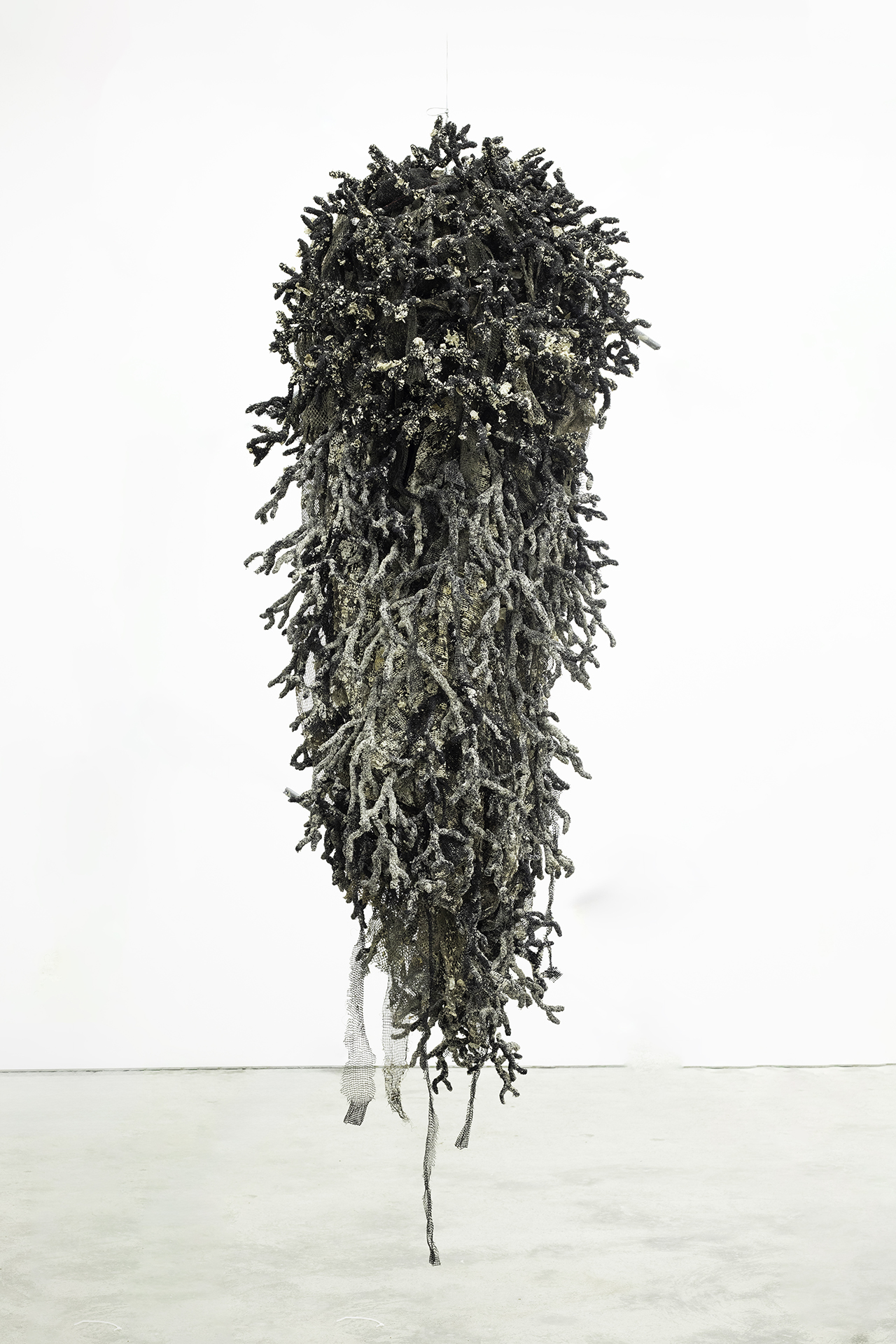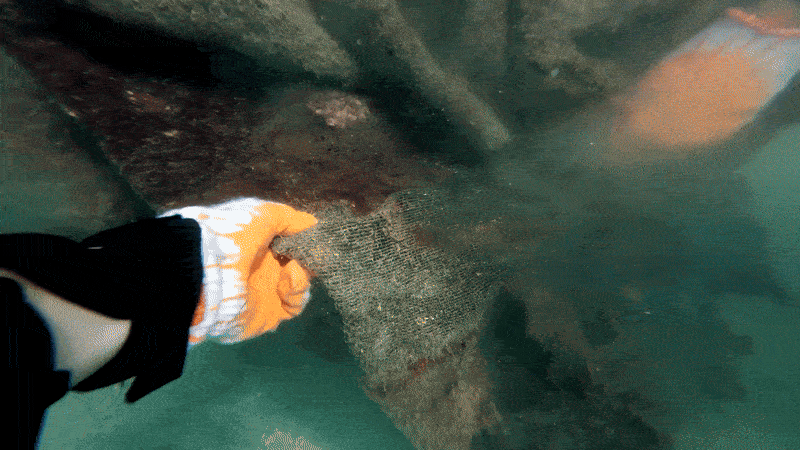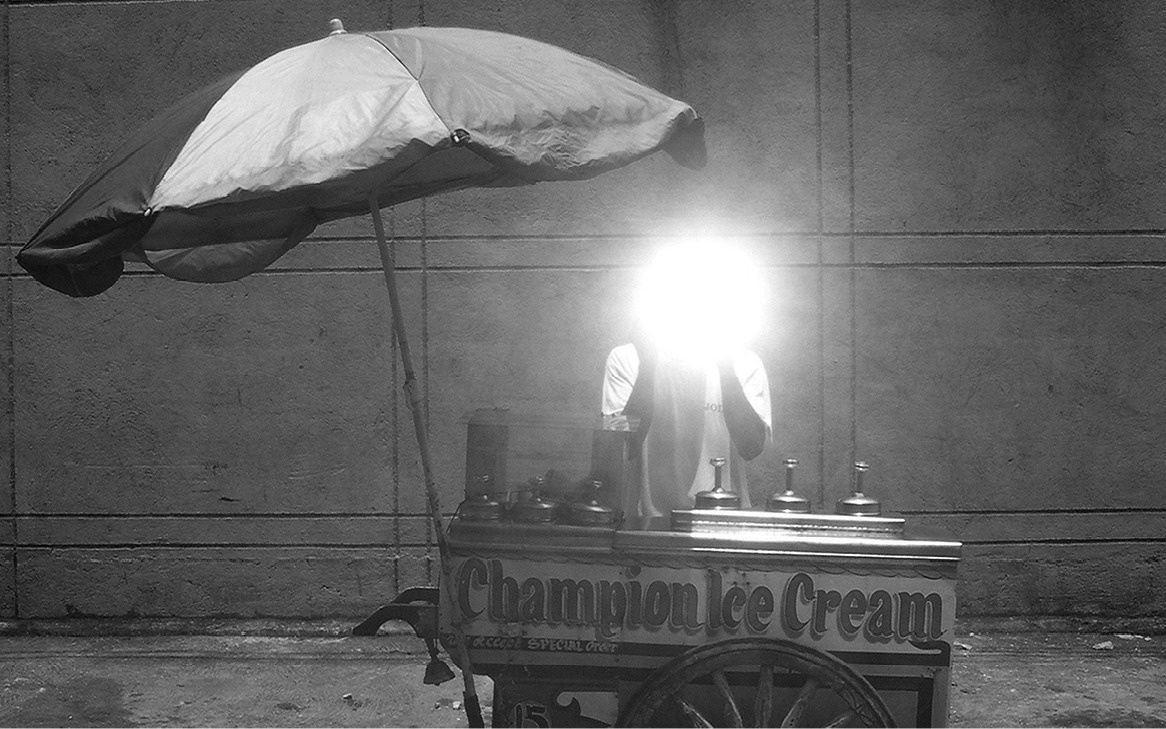
deep in the shallows, afloat in the depths (lumalalim sa kababawan, lumulutang sa kalaliman)
Poklong Anading
Silverlens, New York
About
The Depths: Poklong Anading
Carina Evangelista
The sea is everything. It covers seven tenths of the terrestrial globe.
Its breath is pure and healthy. It is an immense desert,
where man is never lonely, for he feels life stirring on all sides.
The sea is the vast reservoir of Nature.
The globe began with sea, so to speak;
and who knows if it will not end with it?*
Deep in the shallows, afloat in the depths (lumalalim sa kababawan, lumulutang sa kalaliman), Poklong Anading’s exhibition title, captures the ironies that Anading found in the waters during his Lubi Public Art Residency in Davao de Oro, south of the Philippine archipelago. Located on the Dusit Thani Lubi Plantation Resort, artists-in-residence are invited to “use and upcycle indigenous raw materials found exclusively on the slipper-shaped island to create carbon neutral public art installations.” Before the remote island was seen as a tourist destination, it had long served as an agricultural resource. A development corporation initiated the rehabilitation of the ecosystem on the island and engaged marine biologists in efforts to protect the reefs.
Afloat in the depths during a free dive in that area was an empty plastic package of fish crackers, itself a cruel joke not lost on the reality of the habitat for the fish who live there even if they can’t read the name of the famous snack brand, Oishi (“delicious” in Japanese). Indoctrinated in the ethos, “Every dive is a cleanup dive,” Anading picked up this piece of plastic debris of human consumption, leading to the three chapters of Discovery, Recovery, and Renewal of his residency journey–captured in the video footage featured in the exhibition. The Oishi package led him to the discovery of ghost nets in the depths of what one might initially assume as marine idyll. Made of materials that won’t biodegrade for centuries, these abandoned nets can haunt and kill marine life for just as many centuries.
With this discovery, Anading joined the Davao Gulf Divers, a group of volunteer marine biologists and divers, to fish out these nets continuing to “ghost fish”--nets that found themselves trapped in the coral they wrecked and that evolved from ghosts to hosts for other marine life such as algae and barnacles. Thick carpets of algae that clog what might have been porous material and the accumulating encrustation of fouling organisms on the warp and weft of the nets weigh them down, making them tougher to retrieve and more pernicious in their continued “ghost fishing.” Part of the discovery is that these nets were in fact put in place not exactly for fishing but to sieve the trash out so that the island reef would seem pristine, calling to mind a proverb adapted to “The dive to hell is paved with good intentions.”
As a struggling young artist, a conceptual practice proved viable for him to try to hold down an extremely demanding job in the art department for movies and television. He found in the video camera an able studio assistant that he could program to create art while he was out making a living. Barely sleeping from the grueling hours at work, he felt as if he no longer knew when day was day and night was night. And so he positioned his video camera facing the window to capture sunrise and sunset and later exhibited the work, Dusk and Dawn (2003) in his own studio with the monitor set against the same window so that day would be screening at night and night during the day.
Another work early in his career, Line Syndrome (2004), entailed inviting people to draw horizontal lines with a pencil across the wall. He recorded this with his video camera and for the series, Interference (2004), he created 20 monochromatic paintings based on the lines drawn by hands not his.
If one were to consider the absence of the artist’s hand in much of conceptual art, which notoriously led to the fetish for theory and appetite for deskilling in contemporary practice, Anading’s hand may still seem invisible in lumalalim sa kababawan. The installation in this exhibition comprises video and swathes of these recovered nets with handcrafted coral he made with a community of “nanays (mothers)” on the island. He sat with the women in the community to cut the ghost net into strips with which to wrap the wires shaped into coral configurations. But taking the whole process into consideration, the artist’s hand in this case literally attempted to disrupt an ecosystem languishing in the ruins of good intentions. The third leg of his journey, Renewal, involved carefully cutting out “recruits”--the baby coral that had clung to the ghost nets for life–and gently placing them in a coral nursery to coax growth that would not be stunted had they stayed on the ghost nets, which could eventually trap or strangle them. He also joined a group of volunteer divers planting sea grass in hopes of nursing the marine ecosystem back to health. He shared the knowledge acquired from Iñigo Taojo, Davao Gulf Divers lead dive master, that healthy mangroves, sea grass, and coral reefs make up the Holy Trinity in marine life.
The art residency name, Lubi, is the local word for coconut since the area used to be a coconut plantation. If necessity is the mother of invention, Anading now wants to explore the possibility of creating buoys out of coconut husk (coir), which are naturally buoyant–“lumulutang talaga.” Not only is coir organic, “habang nababasa ay lalong tumitibay (the longer it is wet, the stronger it gets).” If such ocean gear could be made of coir, it would pay tribute to the agricultural history of the island and provide livelihood for the community.
His proposal for a public art installation is shaped like a giant ghost net that would in fact be a kind of pergola or canopy of plants. The silhouette would sensitize viewers to the damaging effect of ghost nets but the medium–indigenous and endemic plants growing on the armature–would be a living and breathing carbon-positive sculpture.
Altogether, deep in the shallows, afloat in the depths (lumalalim sa kababawan, lumulutang sa kailaliman) is both a reckoning with the heavy hand and carbon footprint of man on earth and a rejection of dejected cynicism in the face of the gargantuan climate disaster now at our shores. Activated in the whole installation was not just the artist’s hand, but his entire body, plunging into the depths of the water and the depths of the environmental quagmire he discovered.
In a departure from the documentarist’s conundrum between the act of recording and the act of in fact acting (given that intervention is typically taboo in the field of documentary film and photography), the artist is fully engaged. The soundtrack of the videos he took is his breathing and the water swirling around him. At some points in the video recordings, all that one could see is “makapal na alikabok ng dagat (the thick dust of the ocean)” because trying to disentangle the ghost nets unleashes the dust of the dead coral they’re trapped in. The ghost net, bundled and tied into a ball, to be pulled up to the surface of the water, sways in the water like a death veil. Its analog incarnation as an installation hangs like a grieving chandelier or a funereal piñata.
In presence of Nature's grand convulsions, man is powerless.
Anading is witness, documentarist, and interventionist in the process but he does not flex any do-good conceit, being fully cognizant of the immensity of the problem. Nevertheless, as a diving enthusiast, he would prefer to believe that even just one less plastic fish cracker package from a dive is better than oblivion or pessimism.
As long as a man's heart beats, as long as a man's flesh quivers,
I do not allow that a being gifted with thought and will can allow himself to despair.
If God does not interfere in the affairs of man and nature takes its own course, turning synthetic nets into canvases on which smothering mats of algae and organisms paint themselves, free will still summons from the depths of the sentient the desire to act. Even in art.
*All sidebar quotations are by Jules Verne, author of Twenty Thousand Leagues Under the Sea.
Poklong Anading (b. 1975, Manila, Philippines; lives and works in Manila) works with a wide range of mediums and is acclaimed for his pieces that investigate photography and travel. Fascinated with the process of creation and permutation, Anading explores different mediums to engage with a range of sociopolitical and environmental questions. He frequently uses found objects and discarded materials that lead him to investigate notions of worth and value, and to explore what it means for art to exist inside and beyond capitalist production. He has been included in notable group exhibitions such as: Art Week Tokyo, Okura Museum of Art, Tokyo, Japan (2024); Thailand Biennale, Chiang Rai 2023: The Open World, Chiang Rai, Thailand (2023); Parallel Histories; Moving Images, Metropolitan Museum of Manila, Manila, the Philippines (2023); Living Pictures: Photography in Southeast Asia, National Gallery Singapore, Singapore (2022); and Constellations, Photographs in Dialogue, SFMOMA, California, USA (2021).
Installation Views
Works




